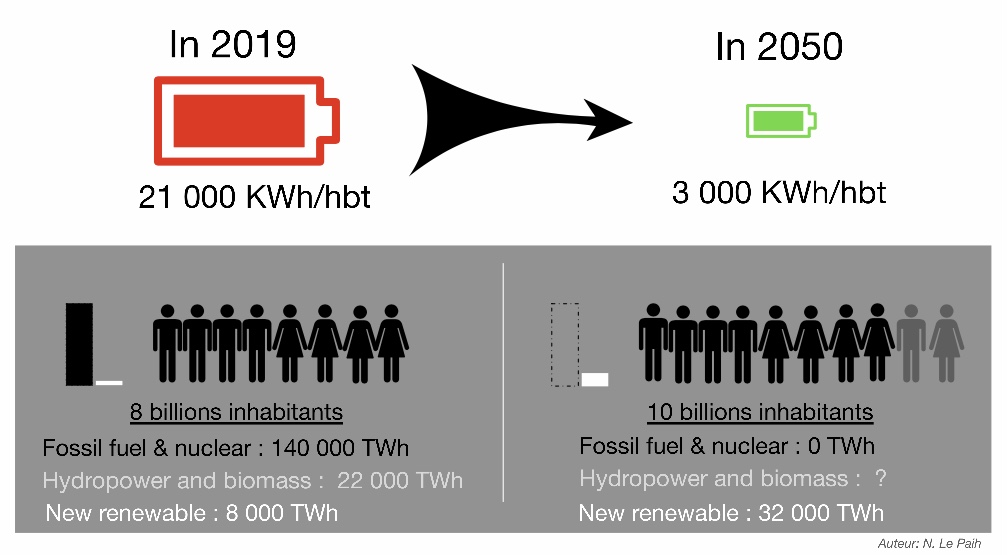
Objective : Learn to live with 7 times less energy by 2050
We have 30 years to repair the brakes, in other words, 30 years to stop using fossil fuels. Therefore, by 2050 we must create a society in which we can live without oil, gas and coal. Since uranium resources are too low to meet global consumption (a few years if the world used exclusively nuclear energy*), the challenge is to succeed sharing energies of renewable origin (hydraulic, wind, solar, etc.). Today, less than 5% of the world's production comes from this type of energy**. Considering that this production will increase by four times by 2050 (following the current growth rate***) and following the current population growth (10 billions by 2050****), we will have to share an annual production smaller than 3000 kWh per inhabitant. Currently, we share 20,000 kWh per inhabitant*****, which means that we have 30 years left to learn how to live with at least 7 times less energy. To do so, we unfortunately need to use oil, gas and coal, amplifying the current warming.
This is the real challenge of our century : being able to live in a world with a climate that becomes increasingly more hostile, using 7 times less energy than today. The more energy we waste, the more hostile the climate will become and the less time (and means) we will have to adapt. So let's stop wasting and get to work ;)


